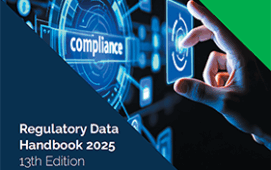Bloomberg has released Entity Exchange, a web-based platform designed to speed up onboarding on the buy side and help banks and brokers on the sell side meet Know Your Customer (KYC) requirements.
The platform enables hedge funds to provide entity data and documentation to their trading counterparties. It is supported by Bloomberg’s data intelligence team and uses optical character recognition to extract entity data from hedge fund documents, which are retained to provide proof of primary sources. The data is then aggregated into an entity profile and used to automate the completion of onboarding forms.
For example, when a broker sends a request for a hedge fund’s information, Entity Exchange automatically matches documents and data from the profile to the information requested before it is released to the broker. The distribution of sensitive data and documents is controlled by the hedge fund using a permission-based workflow that includes the same multi-factor authentication technology as the Bloomberg Professional terminal.
Dan Matthies, head of Bloomberg Entity Exchange, explains: “Our clients are frustrated with the KYC process, which is often based on email. The process is long, which means opportunities to make trading relationships are often missed. It also raises concerns around security, regulatory compliance and audit trails. Entity Exchange takes a new approach to the KYC process that considers the buy side’s onboarding experience as well as the sell side’s information requirements. The emphasis is on allowing both buy-side and sell-side firms to pursue opportunities faster and eliminate the risk associated with today’s KYC processes.”
While Entity Exchange was initially built to manage data and documents required for KYC compliance and onboarding, it is also expected to find a use case in compliance with other regulations that require the transfer of entity information, such as the Foreign Account Tax Compliance Act (Fatca) and Markets in Financial Instruments Directive II (MiFID II).
Bloomberg has onboarded about 65 buy-side firms to Entity Exchange and created entity profiles for them. It has also onboarded multiple brokers and digitised their onboarding forms. The platform is immediately available in North America and Western Europe, and will be expanded internationally later this year. Ongoing developments include improved security, workflows, regulatory capabilities, controls and efficiency gains.
Subscribe to our newsletter




